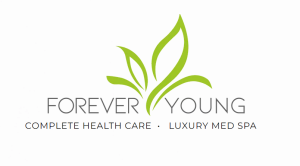Botox, short for Botulinum toxin, is a protein produced by the bacterium Clostridium
botulinum. It has a fascinating history that spans from its initial discovery as a medical
treatment to its widespread use as a cosmetic trend today. This evolution reflects the
versatile nature of medical advancements and societal perceptions of beauty. In this blog
post, we’ll delve into the transformative journey of Botox, tracing its path from a medical
breakthrough to a prominent player in the cosmetic industry.
Medical Origins: In the 1970s, Botox made its debut as a medical treatment to tackle diverse
muscular and neurological disorders. Its effectiveness in mitigating muscle spasms,
uncontrollable blinking, and even cerebral palsy propelled it to the forefront. By temporarily
paralyzing muscles, Botox emerged as a therapeutic solution, enhancing patient relief and
quality of life.
Cosmetic Transition: Transitioning from a medical application to a cosmetic marvel
commenced during the late 1980s and early 1990s. Dermatologists and plastic surgeons
observed the remarkable potential of Botox injections in diminishing wrinkles and fine lines
on the face. This pivotal discovery ushered in a new era for the cosmetic industry, leveraging
Botox for its aesthetic advantages.
Rise in Popularity: The recognition of Botox’s positive impact on facial aesthetics led to an
unprecedented surge in popularity. Public figures and celebrities unreservedly
acknowledged their use of Botox, effectively destigmatizing cosmetic procedures. The
media’s extensive coverage and endorsements by word of mouth propelled Botox into the
mainstream, transforming it into a cultural sensation.
Technological Advancements: Over time, progressive improvements in injection techniques
and formulations have elevated the Botox experience. Precision in administration and
careful dosage calibration have yielded more natural outcomes, mitigating the risk of the
once-feared “frozen” or overtly artificial appearance linked to early Botox treatments.
Psychological and Societal Impact: The adoption of Botox as a cosmetic trend has ignited
robust discussions on beauty ideals, self-esteem, and societal influences. Detractors argue
that the pursuit of flawlessness through cosmetic interventions can foster unrealistic
standards and body image challenges. Conversely, proponents accentuate the
empowerment individuals derive from enhancing their appearance and bolstering their self-
confidence through such treatments.
Ongoing Research and Innovation: Botox remains in a state of perpetual evolution, as
ongoing research delves into its potential across both medical and cosmetic domains.
Beyond its cosmetic functions, Botox has demonstrated efficacy in managing chronic
migraines, excessive sweating (hyperhidrosis), and even depression. The unceasing
exploration of Botox’s capacities underscores its multifaceted nature and its capacity to
address an array of health and wellness concerns.
Key Milestones in the Evolution of Botox:
FDA Approval and Cosmetic Use (2FDA Approval and Cosmetic Use (2002): The American
Food and Drug Administration (FDA) approved Botox Cosmetic in 2002 as a treatment option
for wrinkles and creases on the face. This represented a substantial regulatory recognition of
Botox’s cosmetic uses.
Non-Cosmetic Medical Applications: Botox’s medical uses have expanded even as its
aesthetic uses have become more well-known. It became a successful treatment for
ailments like blepharospasm (spasms of the eyelids), cervical dystonia (neck spasms), and
even urine incontinence brought on by an overactive bladder.
Cultural Acceptance and Normalization: Changing cultural perceptions of aging and beauty
are to blame for the rising acceptance of cosmetic procedures like Botox. People started to
see aesthetic improvements as personal decisions that enable them to feel better about
themselves as talks around body positivity and self-care gained hold.
Societal Impact and Controversies:
Beauty Standards and Aging: The rise in popularity of Botox has sparked discussions about
cultural beauty standards and the pressure to seem young. The widespread use of Botox,
according to critics, might support unattainable standards and foster feelings of inadequacy,
especially among younger generations.
Body Positivity vs. Cosmetic Enhancement: Body positivity advocates place a strong
emphasis on accepting oneself as you are and embracing natural aging, disputing the idea
that one’s outward appearance determines one’s value. Questions about the relationship
between self-love, empowerment, and the desire for aesthetic modifications are raised by
the rise of cosmetic treatments like Botox.
Ethical Considerations: As cosmetic operations become more widely available, questions of
informed consent, safety, and the possibility for exploitation come up. The medical and
ethical communities are constantly concerned with ensuring that people make informed
judgments about cosmetic procedures.
As the premier Botox treatment clinic in New Jersey, Forever Young Healthcare is your
partner in celebrating your unique beauty, erasing the traces of time while preserving the
essence of you. Come experience the difference that expertise, care, and innovation can
make. Schedule your consultation today and embark on a journey to timeless beauty with
Forever Young.

